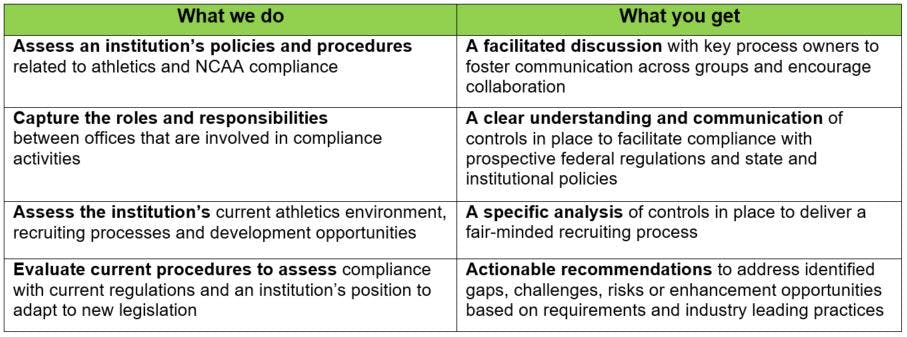Colleges and universities are beginning to adapt name, image and likeness (NIL) policies in response to the recent interim National Collegiate Athletic Association (NCAA) ruling. While some institutions are communicating to students that any NIL deals they secure will not have an effect on institutional scholarships, the income generated from NIL will likely impact the amounts that students will qualify for under federal award programs (Title IV), including Pell Grants, the largest needs-based federal aid program.
Income earned from NIL will be considered additional taxable income to students, and as such, will be reportable on the Free Application for Federal Student Aid (FAFSA). If their income increases, this could reduce needs-based aid. Approximately half of students on athletics scholarships receive some sort of needs-based aid and approximately one-third of student athletes receive Federal Pell Grants. Pell awards are based on a number of factors, including student and parent income levels, which along with number of family members, number of family members in college and other factors, is used to calculate the expected family contribution (EFC). EFC along with cost of attendance, affects a student’s Pell award amount.
Students may or may not earn more from NIL opportunities than the potential loss of financial aid or increase in income taxes. However, these changes are expected to cause confusion and prompt students to ask for guidance from the institution’s financial aid office or athletics department, neither of which is likely comfortable making such recommendations. Colleges and universities should be prepared to understand these changes and expect questions such as, “How much can I earn before this deal affects my Pell award?” Factors to consider include not only student concerns, such as net NIL earnings after taxes compared to potential loss of financial aid, but also potential financial impact to institutions to cover lost federal aid with athletics scholarship funds. Because the FAFSA uses the prior two years tax return information, there is a potential for a student athlete to earn income from NIL in the two years prior to their reporting of that income for financial aid purposes. However, there are rules in place around conflicting information that an institution has about a student’s income; if a student has a well-publicized deal, this could complicate things. As such, NIL income is more likely to impact juniors’ and seniors’ needs-based aid if they received NIL income in their early years of college. Additional impact on federal financial aid could occur if high school students participate in NIL opportunities that affect FAFSA filings in their freshman and sophomore years.
NCAA revenue distribution is impacted by the level of student financial aid given to college athletes. If that aid changes due to NIL, revenue distribution to individual colleges and conferences could also be affected.
Non-cash NIL awards (such as receipt of products endorsed) would be considered taxable income to a student and could impact Pell awards, but would not affect the student’s cash flow. This should also be considered as students evaluate their financial needs.
The NCAA has issued guidance for collegiate financial aid offices here. However, this policy does not provide any specific guidance to address this analysis or impact of NIL on student income, only that NIL income should be considered as any other student income is.
Existing guidance from the Department of Education (ED) should be applied when evaluating NIL income but additional guidance from ED may be needed. The National Association of Student Financial Aid Administrators has indicated that it will send additional requests for guidance to ED as appropriate.
Baker Tilly can help
We can help your institution take a proactive approach to evaluate the current state of your policies, processes, internal controls and definitions related to athletics and NIL to identify opportunities that align with new and upcoming changes.

For more information, or to learn more about how Baker Tilly's higher education team can assist your institution, contact our team.



